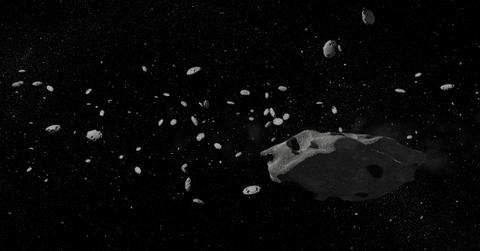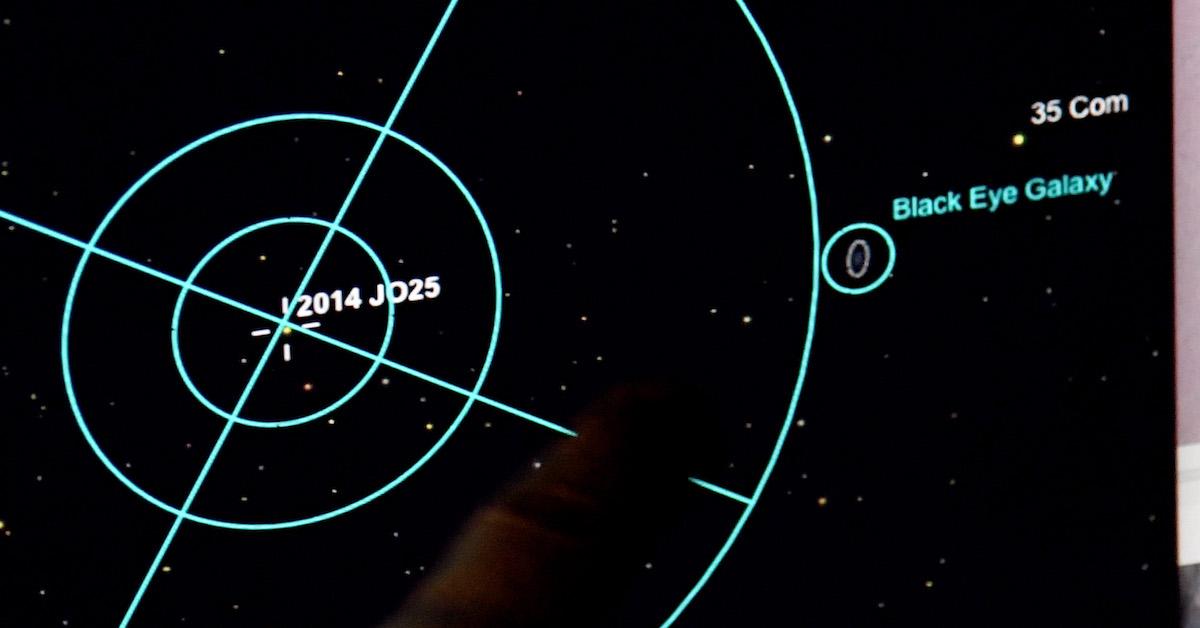Tiny Asteroid Due to Burn up in Earth's Atmosphere: What You Should Know
A tiny asteroid is predicted to produce a "nice fireball in the sky over northern Siberia" on Dec. 3, 2024.
Published May 23 2022, 2:05 p.m. ET

A telescope locating asteroid 2014 JO25 outside the Planetarium at the College of Southern Nevada on April 19, 2017.
In the film Don’t Look Up, two scientists discover that an asteroid is headed directly towards Earth, and they calculate that the planet’s destruction by the asteroid is a sure thing. Currently, life is imitating art, as an asteroid is heading for Earth — but fortunately, it is not expected to collide with our home planet in a catastrophic way.
Here’s the latest news on the asteroid, when it’s predicted to come near Earth, and the details on what exactly asteroids are made of.

When is the next asteroid predicted to pass by Earth?
On Dec. 3, 2024, the European Space Agency (ESA) issued an alert at 9:27 a.m. GMT that a small asteroid would collide with Earth's atmosphere around 11:15 a.m. local time or 4:15 p.m. GMT above northern Siberia, per New Scientist.
Scientist Alan Fitzsimmons of Queen’s University Belfast in the U.K. said in a statement that the asteroid was of no risk to anyone on the ground. He added, "It’s a small one, but it will still be quite spectacular. It will be dark over the impact site and for several hundreds of kilometres around there’ll be a very impressive, very bright fireball in the sky."
Will the asteroid hit Earth? Here’s the latest news.
Thankfully, this tiny asteroid will not hit Earth, but will burn up in the Earth's atmosphere over northern Siberia. According to Space, the asteroid is around 27 inches wide and was detected by astronomers with the Kitt Peak National Observatory in Arizona.
The asteroid's temporary designator is C0WEPC5, per Space, and has become the fourth "imminent impactor" of 2024, also known as an asteroid that was discovered within hours of impact. The outlet notes that C0WEPC5 is only the eleventh imminent impactor overall. The previous imminent impactor was on Oct. 22, discovered by the Asteroid Terrestrial-impact Last Alert System (ATLAS) survey in Hawaii.
What are asteroids made of?
NASA defines asteroids, aka minor planets, as “rocky, airless remnants” that remain from our solar system’s formation billions of years ago. NASA reports that there are currently 1,113,527 asteroids in the solar system, which greatly range in size. Most asteroids are found orbiting the sun in the asteroid belt, located between Mars and Jupiter.
There are three main types of asteroids, each of which have different compositions, as explained by NASA. C-type (chondrite) asteroids, which represent most of our solar system’s asteroids, are made of clay and silicate rocks; S-type (stony) asteroids are composed of silicate materials and nickel-iron; and M-type asteroids are metallic, and made of a nickel and iron combination.
